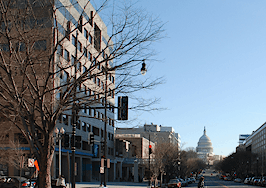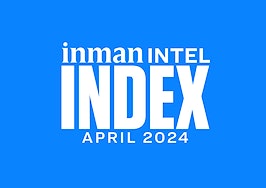- NAR is one of the most powerful lobbying organizations in the country and puts its money where its mouth is in Washington.
- The trade group spent $64.8 million on the 2015-2016 election cycle, more than nearly any other organization, advocating for tax relief, middle-class homeowners, housing finance reform and other real estate issues.
- NAR supports many federal candidates who are either pro-Realtor or Realtors themselves.
- Spending spans both Democratic and Republican parties, and NAR claims to be the "most bipartisan major PAC" but recent stats show slightly more went to GOP candidates.
In November 2017, the National Association of Realtors announced it is considering increasing its political advocacy spending by $30 million annually, i.e. $25 per member.
That increase, from about $48 million to about $78 million per year, may mean a dues hike for NAR’s 1.3 million members, unless the nation’s largest real estate trade group decides to shift money from elsewhere. Given the proposed increase and the fast-approaching 2018 U.S. midterm campaign season, it’s worth asking: How is NAR spending its lobbying money now?
Inman took a look at the trade group’s political spending on OpenSecrets.org, a comprehensive resource for data on federal campaign contributions and lobbying from the nonpartisan, nonprofit organization Center for Responsive Politics.
Open Secrets separates types of spending into three buckets: lobbying, campaign contributions, and independent expenditures (money spent in support of candidates but not given directly to them).
Donations to the Realtor Political Action Committee (RPAC), which are voluntary, raised from individuals, and considered “hard” money, are used to contribute directly to candidates’ campaigns.
RPAC also has a Political Advocacy Fund that is considered “soft” money raised from organizations and can be used for state and local candidates in some states, for RPAC’s operations, and for some grassroots political programs.
The $40 from each NAR member’s annual dues that goes to the trade group’s political advocacy arm, the Realtor Party, is considered “soft” money and is used for lobbying and independent expenditures.
Here are five takeaways from the Open Secrets data for the 2015-2016 election cycle:
NAR lobbying spend has skyrocketed in recent years and the trade group outspent nearly every other organization in the 2015-2016 cycle
NAR spent $64.8 million on lobbying in the 2015-2016 election cycle, second only to the U.S. Chamber of Commerce (which spent nearly $104 million) out of 3,766 organizations, according to Open Secrets. This is more than seven times as much as NAR spent on lobbying in 2000 ($9.04 million).
NAR ramped up its lobbying spend in 2012 after it instituted a $40 dues increase for political advocacy in the wake of the Supreme Court’s 2010 Citizens United ruling. In 2012, NAR spent $41 million on lobbying compared to $17.3 million in 2008 and $17.6 million in 2010. Lobbying spend rose to $55.1 million in 2014 and $64.8 million in 2016.
NAR reports its total lobbying expenditures at the national, state and local level, according to NAR spokesperson Sara Wiskerchen. This includes direct lobbying and grassroots lobbying (when the trade group asks members of the public to contact their legislators).
Although NAR doesn’t lobby local governments itself, “[m]ore than 45 percent of NAR’s lobbying and political expenditures in the 2015-16 cycle went to local and state Realtor associations in support of local candidates, issue campaigns and for other advocacy needs,” Wiskerchen told Inman via email.
Those local and state funds are used toward grants, education, member engagement tools and political fundraising resources, she said.
“The remaining 55 percent of the spending is done at the federal level lobbying for issues in more than 75 different legislative and regulatory policy categories, educating the public about federal policy initiatives, and independent expenditures in support of candidates with strong records of support for property ownership,” Wiskerchen said.
She said NAR anticipates similar levels of spending for the 2018 and 2020 election cycles. It’s “too early” to identify the trade group’s lobbying priorities in 2020, she said, but NAR will advocate for these issues this year:
- A multiyear reauthorization of the National Flood Insurance Program
- Ways to protect middle-class homeowners by improving the new tax law
- Responsible housing finance reform and the future of the government-sponsored enterprises
- Resolution of the Federal Communication Commission’s repeal of net neutrality
- Inclusion of self-employed individuals in association health plans
- The extension of important real estate tax relief extensions, such as mortgage debt cancellation relief

Daniel Fishel/Inman
This is the bill that NAR lobbied so hard to get passed
The bill that appears most often in the quarterly lobbying reports filed by NAR lobbyists (including in-house and outside lobbyists) in the 2015-2016 election cycle is the Housing Opportunity Through Modernization Act.
That bill was signed into law by President Obama on July 29, 2016 and modified rental assistance and public housing programs. But the primary reason NAR supported the bill was because it reformed Federal Housing Administration restrictions on condominium financing, making condos more available to homebuyers in need of an FHA-backed mortgage to purchase a new home.
“Specifically, it made FHA’s condo building recertification process less burdensome and costly, lowered FHA’s owner-occupancy requirement from 50 percent to 35 percent, and required FHA to replace their policy on transfer fees with the Federal Housing Finance Agency’s less-restrictive model,” Wiskerchen said.
“Lastly, the bill streamlined the exemptions process for FHA’s rule prohibiting certification of condominium projects with more than 25 percent commercial space. Unfortunately, the proposed rule has not yet been finalized by HUD, but we continue to work with them closely.”
Other bills that NAR lobbied hard for were the Housing America’s Workforce Act of 2015 (stalled in committee), Flood Insurance Market Parity and Modernization Act (stalled in committee), and the Driver Privacy Act of 2015 (signed by President Obama Dec. 4, 2015), among others.

Daniel Fishel/Inman
NAR spending tends to favor the GOP, but trade group aims to be ‘as bipartisan as possible’
NAR contributes to candidates in both the Republican and Democratic parties, but according to Open Secrets’ data, NAR spending tends to favor the Republican Party.
In the 14 two-year cycles between 1990 and 2016, NAR contributed to Republicans more than Democrats in nine of those cycles. This includes the 2012, 2014, and 2016 cycles. In the 2016 cycle, NAR contributed $2.2 million to Democrats and $3 million to Republicans. Of that money, $1.7 million went to Democratic congressional candidates and $2.3 million went to Republican congressional candidates. Incumbents got $3.6 million and non-incumbents got $402,850.
NAR spent $10 million in independent expenditures in the 2015-2016 election cycle, $6 million to Republicans and $4 million to Democrats. Open Secrets gives NAR’s outside spending a pretty high success rate: 82.4 percent by candidate.
In the 2016 cycle, NAR’s political action committee, RPAC, raised $10.2 million and spent $6.9 million. Of the latter, $4 million went to federal candidates (42 percent Democrats and 58 percent Republicans).
“The Realtor Party supports candidates of both parties and aims to be as bipartisan as possible, but a perfect 50/50 split isn’t always achievable as we identify candidates who will work with Realtors to promote and protect property ownership,” Wiskerchen said.
“That being said, we are still the most bipartisan major PAC in the country.”

Daniel Fishel/Inman
These are the politicians who got the most from NAR in 2016
NAR contributed directly to 567 federal candidates in the 2016 cycle. The one that got the most was Darin LaHood (R-Illinois) in the House, who got $17,000. “This is because LaHood had a special election and then a regular election,” Wiskerchen said.
Of the top 10 federal candidates in terms of direct NAR contributions, nine were Republicans. The 10th was a Democrat: Carolyn B. Maloney of New York, who got $12,000. “Many candidates on both sides received the maximum legal $10,000 direct contribution,” Wiskerchen said.
But NAR shells out the most money on candidates in the form of independent expenditures. Of the $10 million in these indirect contributions NAR spent in the 2016 cycle, $1.9 million was for Josh Gottheimer (D-New Jersey) in the House, followed by $1.6 million for Johnny Isakson (R-Georgia) in the Senate. They both won their races.
But the candidate NAR spent its third-largest amount of money on ($1.5 million) lost his race: Joe Heck (R-Nevada), running for the Senate.
Among the top 10 recipients, six were Republicans and seven won. All but one were male. At least four are licensed real estate professionals and current or former Realtors themselves.
These top 10 recipients got exponentially more funding from NAR than the other 17 federal candidates that received independent expenditures from the trade group. For instance, the candidate that got the 10th most in independent expenditures got $326,532; the one that got the 11th most got $39,008.
Here are the top 10 recipients:
- Josh Gottheimer for House (D-NJ): $1.9 million (won)
- Johnny Isakson for Senate (R-GA): $1.6 million (won)
- Joe Heck for Senate (R-NV): $1.5 million (lost)
- Rob Portman for Senate (R-OH): $987,095 (won)
- Chris Van Hollen for Senate (D-MD): $926,062 (won)
- Mike Coffman for House (R-CO): $813,227 (won)
- Bob Dold for House (R-IL): $786,117 (lost)
- Rick Nolan for House (D-MN): $723,146 (won)
- Lou Correa for House (D-CA): $ 333,191 (won)
- Julia Howard for House (R-NC): $326,532 (lost in primary)
Asked why NAR supported these candidates so much more than others, Wiskerchen said, “We support candidates who support pro-real estate public policies, and each were identified as advocates for real estate issues. NAR provided greater financial support for pro-Realtor candidates in tight races.”
State and local Realtor associations offer more details about why specific candidates received support.
For instance, in a statement, New Jersey Realtors PAC Chair Erin Brown cited Gottheimer’s “solid knowledge of what it will take to responsibly reform the mortgage finance system to ensure affordable, long-term financing is available to homebuyers while protecting taxpayers” as a reason to support him.
Georgia Realtors feature Johnny Isakson, an active associate broker and a Realtor, in its Hall of Fame. “Johnny has been a staunch supporter of the Code of Ethics and the role of the real estate professional in the real estate transaction,” the state association says on its website.
Nevada Realtors noted Heck’s backing of “growth and stability in the housing market, developing a stronger economy, lessening the regulations on homeowners and the tax burden on Nevada families, and standing for real estate issues,” as reasons behind the state association’s support.
The Cincinnati Area Board of Realtors listed Portman among 2016 candidates who “have demonstrated their commitment to and support of the real estate industry and private property rights.”
In a press release, the Maryland Realtors PAC noted that “Van Hollen has been a staunch advocate of preserving incentives for homeownership such as the FHA program, which is essential for many Maryland’s homebuyers seeking safe, affordable financing, as well as a long-term flood insurance reauthorization to cover Maryland’s many Chesapeake Bay and coastal communities.”
The Colorado Association of Realtors applauded Coffman in 2016 for his introduction of a federal bill to create first-time homebuyer savings accounts. “This bill would help provide a very important financial savings resource for many people to achieve their dream of homeownership,” CAR Chairman Alan Lovitt told The Gazette.
Dold was one of five “Opportunity Race” federal candidates in Illinois. “Opportunity Race candidates are those candidates in hotly contested races targeted for additional grassroots outreach efforts, in addition to direct contributions,” Illinois Realtors says on its website.
“The candidates were identified by local associations and by the RPAC Trustees as Realtor Champions for their support of businesses, private property rights, economic growth and low taxes.”
Nolan was the only one of the top 10 candidates to respond to Inman’s request for comment for this story.
“Congressman Nolan has always supported laws and policies that encourage middle class working families to buy homes and invest in their communities,” said Annie Harala, Nolan’s campaign manager, in an emailed statement.
“So it’s no surprise that the National Association of Realtors would have supported him so strongly during the highly competitive and expensive 2016 election cycle.
“Moreover, because Congressman Nolan is a licensed Realtor, he probably understands the issues pertaining to homeownership better than most. So that could well have been a major factor in these independent expenditures on his behalf.”
Correa is a licensed real estate broker and a former Realtor. A Realtor Party mailer in 2016 read: “Lou Correa is committed to maintaining a strong and stable market for the benefit of our entire community. He understands the importance of a robust housing market.”
Howard is also a licensed real estate broker and a current Realtor. She’s a supporter of the mortgage interest deduction, but was also a primary sponsor of HB2, North Carolina’s controversial “bathroom bill,” which required people visiting government facilities to use the bathroom that corresponds with the gender on their birth certificate.
Wiskerchen encouraged Realtors and and local and state associations to provide feedback to help RPAC determine whether or not to support a candidate running for federal, state or local office.

Daniel Fishel/Inman
NAR claims it did not directly fund any of the 2016 presidential candidates
NAR does not endorse presidential candidates and contributed no money to either Donald Trump’s, Hillary Clinton’s, or Bernie Sanders’ campaigns, Wiskerchen said.
However, NAR did pay $225,000 for Clinton to speak at a private event in front of Realtors in San Francisco back in 2013, before she declared her 2016 candidacy, according to leaked records online.
NAR has never confirmed Clinton’s speaker fee, but told Inman that “[c]onference registration fees cover all costs for speakers and no member dues were paid to Clinton.”
“NAR is nearly always precluded by confidentiality clauses in speaker agreements to publicize or share speaker fees,” Wiskerchen added.
The trade group has invited presidential candidates from both parties to its conferences, including Clinton, Ben Carson, and Mike Huckabee.
Open Secrets’ website claims NAR gave Donald Trump’s presidential campaign $1,500, Hillary Clinton’s presidential campaign $5,304, and Bernie Sanders’ Senate campaign $2,661, but, according to Wiskerchen, these are reporting errors by Open Secrets.
Inman reached out to Open Secrets and a spokesperson said RPAC did not appear to have donated to either of the three candidates, but “we have many records from employees of NAR and its subsidiaries donating to these three candidates” so that is likely where the donations came from.
“Being an employee of NAR does not exclude someone from engaging in certain political activities, including making voluntary, personal contributions; however, staff are not representing NAR when they personally participate in any political process,” Wiskerchen said.













